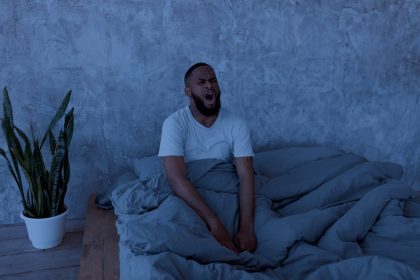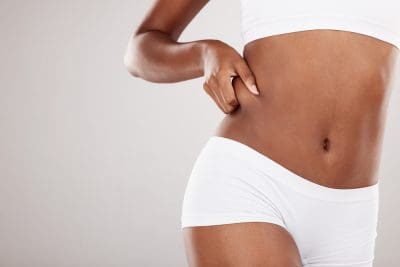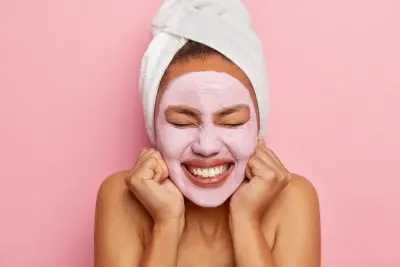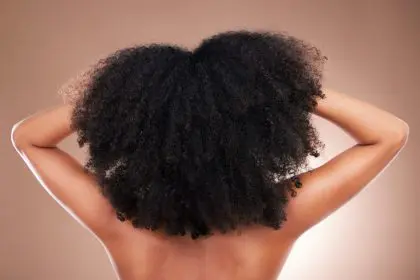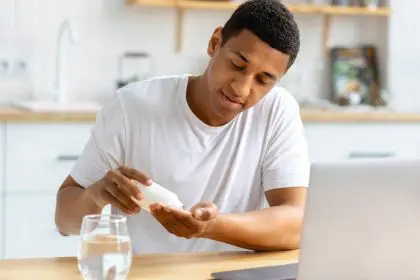Ever noticed those mysterious breakouts that appear after a good night’s sleep? You wash your face religiously, invest in quality skincare products, yet still wake up with new blemishes decorating your cheeks and jaw. The culprit might be cozying up with you every single night. That innocent-looking pillowcase could be secretly undermining your entire skincare routine.
The dirty truth about where you lay your head
Think about it. The average person spends around 56 hours each week with their face pressed against a pillowcase. That’s over two full days of continuous face-to-fabric contact. Now consider what collects on that fabric night after night.
Natural oils from your hair and skin transfer to your pillowcase while you sleep. These oils build up gradually, creating an invisible film that sits waiting for your face each night. It’s like washing your face and then immediately rubbing it on a surface that hasn’t been cleaned in days.
Dead skin cells shed naturally during sleep. While your body is busy repairing itself, it’s also discarding old cells, many of which end up embedded in your pillowcase fibers. These cells mix with oils to create an ideal environment for acne-causing bacteria.
Skincare product residue transfers from your face and hair to your pillowcase. Even if you wash your face before bed, any serums, moisturizers or treatments you apply afterward can rub off and accumulate night after night. This residue can re-clog your pores when you lay down the next evening.
For those who don’t shower before bed, environmental pollutants, dirt, and even makeup remnants can transfer to pillowcases. These impurities then press against your skin for hours while you sleep, potentially triggering inflammation and breakouts.
The face-mapping evidence
There’s a reason dermatologists can often tell you’re a side sleeper just by looking at your breakout patterns. The connection between sleep position and acne location provides compelling evidence of the pillowcase-breakout link.
Right-side sleepers tend to experience more breakouts on their right cheek and jaw, while left-side sleepers show the opposite pattern. This asymmetrical distribution of blemishes strongly suggests an external cause rather than hormonal or internal factors, which typically affect both sides more evenly.
Those mysterious jawline and cheek breakouts that appear despite your careful skincare routine often correlate precisely with the areas making the most contact with your pillowcase. While hormones certainly play a role in acne, the positional pattern tells a revealing story.
The “pillowcase face” typically presents as small, similarly-sized inflammatory papules rather than deep cystic acne. This type of breakout pattern is consistent with bacterial transfer and external irritation rather than hormonal fluctuations.
People who regularly change their pillowcases often report significant improvement in these specific breakout zones, further strengthening the connection between your bedding and your complexion.
Not all fabrics are created equal
The material of your pillowcase plays a crucial role in how it affects your skin. The wrong fabric choice might be exacerbating the problem.
Cotton may feel nice, but its absorbent nature means it soaks up oils from your skin and hair like a sponge. These oils build up night after night, creating a playground for bacteria. Cotton also creates more friction against skin, potentially irritating existing blemishes.
Polyester and other synthetic fabrics don’t breathe well, trapping heat and moisture against your skin. This creates the perfect warm, damp environment for bacteria to thrive. These fabrics can also trap dead skin cells more effectively than natural alternatives.
Silk and satin pillowcases reduce friction against your skin, meaning less irritation and potential for breakouts. Their smooth surface creates less drag on facial skin, reducing the aggravation of existing pimples. These fabrics also absorb less moisture and oil than cotton, keeping these substances from building up as quickly.
Copper-infused fabrics represent the newest innovation in skin-friendly pillowcases. Copper has natural antimicrobial properties that help kill acne-causing bacteria before they can transfer to your skin. Early research suggests these specialty pillowcases may significantly reduce breakouts for some people.
Silver-infused fabrics work similarly to copper, with antimicrobial properties that help keep bacterial populations in check. Though typically more expensive, these specialized pillowcases may be worth the investment for those struggling with persistent pillowcase-related breakouts.
The weekly change isn’t enough
If you’re only changing your pillowcase once a week with your regular laundry, you might be unknowingly contributing to your skin issues. That weekly schedule means by days 6 and 7, you’re essentially pressing your clean face into a week’s worth of accumulated oils and dead skin cells.
Ideally, changing your pillowcase every 2-3 days provides the best balance between practicality and skin protection. This frequency prevents significant buildup of oils, dead skin cells, and bacteria that can trigger breakouts.
For those with particularly acne-prone or sensitive skin, daily changes might be necessary during flare-ups. While this sounds extreme, it often produces dramatic improvements for those with stubborn breakouts.
The “flip and flip again” method extends the life of each pillowcase. Use one side for a night or two, flip it over for another night or two, then change it. This approach gives you double the use before a wash is needed.
Keep multiple pillowcases in rotation so you’re never tempted to skip a change due to laundry limitations. Having 4-7 pillowcases on hand makes frequent changing much more convenient.
The washing protocol matters
Even frequent pillowcase changes won’t help if your washing method isn’t eliminating the acne-causing culprits embedded in the fabric.
Hot water washing is crucial for killing bacteria and removing oil buildup in fabrics. While modern detergents work well in cold water for general cleaning, the hot cycle offers better removal of the specific substances that trigger breakouts.
Fragrance-free detergents prevent additional irritants from being introduced to your pillowcase. Those lovely scented detergents contain chemicals that may remain in the fabric and irritate sensitive or acne-prone skin.
Adding a half-cup of white vinegar to the rinse cycle helps eliminate detergent residue that might otherwise remain in the fabric and irritate your skin. The vinegar smell dissipates when dry, leaving no lingering odor.
Avoid fabric softeners and dryer sheets when washing pillowcases. These products coat fabrics with chemicals and waxes that can clog pores when they come in contact with your skin.
Drying pillowcases in direct sunlight, when possible, provides additional bacterial disinfection through UV exposure. This natural method adds an extra layer of protection against acne-causing bacteria.
Beyond changing and washing
While frequent pillowcase changes form the foundation of prevention, additional strategies can further reduce the risk of pillowcase-induced breakouts.
Showering before bed significantly reduces the transfer of daily grime, oils, and environmental pollutants to your pillowcase. Even a quick rinse can make a substantial difference in what accumulates on your bedding.
Wearing your hair up and away from your face while sleeping keeps hair oils from transferring to both your pillowcase and your skin. This is especially important if you use leave-in hair products that could be comedogenic.
Applying skincare products earlier in your evening routine gives them time to absorb properly before you hit the pillow. Aim to complete your nighttime skincare regimen at least 30 minutes before bed to minimize transfer.
Using a clean towel over your pillowcase in a pinch can serve as an emergency solution when you haven’t had time to change your bedding. While not ideal for long-term use, this hack provides a fresh surface in a hurry.
Investing in a silk or satin bonnet or head wrap protects both your hair and your pillowcase if changing cases frequently isn’t practical. This creates a barrier between your hair and the pillowcase, reducing oil transfer.
The pillowcase makeover results
People who implement regular pillowcase changes often report surprisingly significant improvements in their skin clarity. While not a miracle cure for all acne, this simple habit change frequently reduces inflammatory breakouts by 40-60% for those affected by this particular trigger.
The jaw and cheek zones typically show the most dramatic improvement, with many people reporting that these previously stubborn areas clear up within weeks of implementing more frequent pillowcase changes and proper washing techniques.
Morning puffiness and irritation often decrease alongside acne improvements. The cleaner sleep surface benefits overall skin health, not just breakout activity.
The best news? This skin-clearing strategy costs almost nothing compared to expensive treatments and products. A few extra pillowcases and slight adjustments to your laundry routine could save hundreds on specialty skincare products.
Unlike many acne interventions that require months to show results, pillowcase-related improvements often become visible within just 2-3 weeks, providing quick feedback on whether this particular trigger is affecting your skin.
Your path to clearer skin might be as simple as changing where you lay your head at night. By treating your pillowcase with the same care you give your face, you align your sleep environment with your skincare goals, potentially resolving a frustrating source of breakouts that’s been hiding in plain sight.





